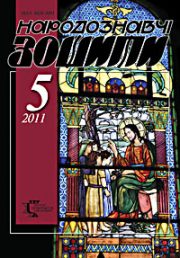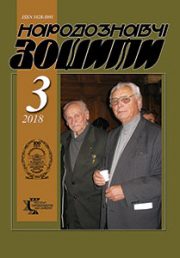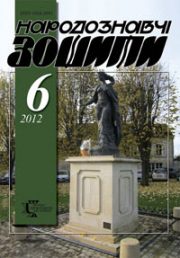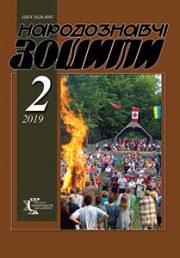The Ethnology Notebooks. 2017, 1 (133), 136–153
UDK 392.8(477.86=161.2)
DOI https://doi.org/10.15407/nz2017.01.136
ORCID ID: https://orcid.org/0000-0001-8111-6563
Received 27.01.2017
Sapeliak Oksana Adamivna, Candidate of Sciences in History, Senior Researcher in the department of the modern ethnology of the Institute of Ethnology of the National Academy of Sciences of Ukraine.
Svobody Avenue 15, 79000, Lviv, Ukraine.
Contacts: e-mail: oksana.sapelyak@gmail.com
Abstract. Regional peculiarities of pokuttians` folk nutrition are considered. The folk meal classificated in order to spiritual life of Ukrainians: everyday`s food (lean and ferial), holidays meal, ritual dishes. Attention is paid to: common an distinctive features of Ukrainians nutrition in villages and towns; emotional, psychological and pedagogical aspects; accordance for the contemporary all-European recommendations, which are proposed by scientific researches in nutrition and health care.
Keywords: food stuff, everyday`s meal, ritual dishes, holiday`s meal, cooking technology, drinks, flavours.
REFERENCES
Bohachevs’ka-Khom’yak, M. (1995). Bilym po bilomu. Zhinky v hromads’komu zhytti Ukrayiny. 1884—1939. Kyiv: Lybid’ [in Ukrainian].
Holubovych, I. (1918). Narodna pozhyva v Snyatyns’komu poviti. Materialy do ukrayins’ko-rus’koyi etnolohiyi. 18, 48—70. L’viv [in Ukrainian].
Hontar, T. O. (1979). Narodne kharchuvannya ukrayintsiv Karpat. Kyiv: Naukova dumka. [in Ukrainian].
Mokhoruk, D. (2008). Selo moye Toporivtsi. Istoryko-krayeznavchyy ta etnohrafichnyy zbirnyk. Etnohrafichnyy obraz sela (Vol. 6). Kosiv [in Ukrainian].
Pan’kiv, M. I. (1991). Narodna yizha na Pokutti. Ivano-Frankivs’k [in Ukrainian].
Savchuk, M. (2010). Z kulinarnoho mynuloho Kolomyyshchyny. Krayeznavchyy narys [in Ukrainian].
Sapelyak, O. (2008). Ukrayins’ka spil’nota v Arhentini. Istoryko-etnolohichnyy aspekt. L’viv [in Ukrainian].
Smerechans’kyy, R., Kahlyan, O. & Nykyforuk, V. (2009). Horodenkivshchyna. Stezhkamy stolit’. Ivano-Frankivs’k [in Ukrainian].
Terlets’ka, Z. (1990). Ukrayins’ki stravy. New York [in Ukrainian].
Frankiv, V. & Bodnarchuk, Yu. (1991). Istoriya Chernyatyna. Ivano-Frankivs’k [in Ukrainian].
Kolberg, O. (1882). Pokucie. Obraz etnograficzny (Vol. II). Kraków [in Polish].
Waigel, L. (1887). Rys miasta Kolomyja. Kolomyja [in Poish].
Lastovets’kyy, S. M. Istoriya sela Voronats’kyy. Retrieved from: www.history.iv-fr.net [In Ukrainian]. (Last accessed 25.12.2016)







